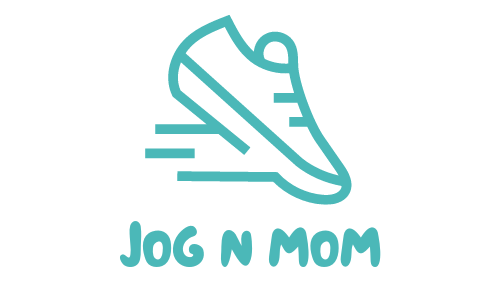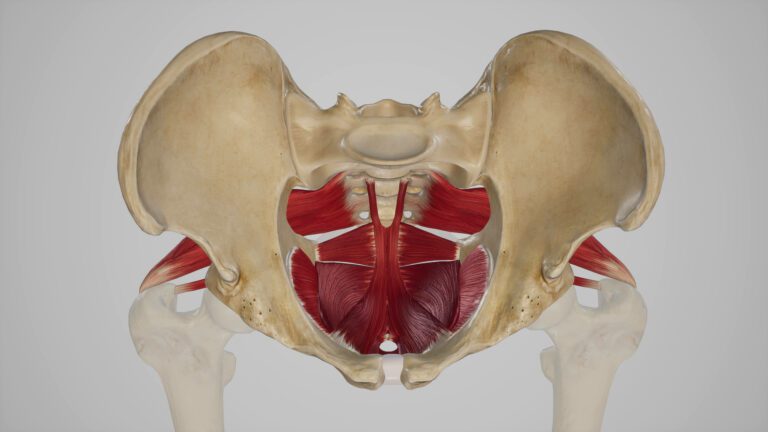How to Start Running Postpartum- Your Complete Guide to Running after Birth
Before having my first baby, running was my preferred form of exercise. Although there were times when running had to take a backseat to other things in my life, I always took comfort in the fact that I could easily pick it back up when I had the time.
However, after giving birth, I thought running was out of the question. High-impact exercises like jumping jacks felt uncomfortable and put too much pressure on my pelvic floor. I thought I was limited to low-impact exercises such as walking and yoga for the rest of my life.
Things changed when my daughter turned one, my husband was away at Army Basic Combat Training, and I found out I was having a miscarriage. I felt devastated, alone, and without a sense of purpose. I realized that to be the best mother to my toddler, I needed to prioritize my mental and physical health.
I remembered how much I enjoyed running in the past and how quickly I could pick it up again. For the sake of my daughter and myself, I decided to get back into running. I bought a jogging stroller and figured all would be smooth sailing from there. Wrong.
After experiencing several injuries, I had to stop my running routine abruptly. I came to the realization that running post-pregnancy required more effort and preparation than before childbirth. I discovered that pregnancy and birth had lasting effects on my body that affected the way I ran, and I understood that I had to adjust my running approach.
After struggling to find reliable information on safely resuming running after childbirth, wading through much misinformation, and having experienced my own frustrating pelvic floor dysfunction, I conducted in-depth research. I gathered some valuable resources that helped me write this article. I am thrilled to share this evidence-based information with you, knowing it will safely allow you to return to the sport you love as soon as possible. (Check out the reference list at the end of this blog post to read more for yourself.)
Follow the tips in this guide to learn how to start running postpartum with a healthy and safe foundation.
How Soon Postpartum Can I Start Running?
Many doctors recommend that women wait six weeks after delivery before resuming exercise, provided no other complications exist. However, this approach is insufficient to determine whether a woman can return to high-impact exercises like running. Care providers should take more time and care to evaluate a woman’s condition before recommending a return to exercise.
The 2019 Return to Running Postnatal Guidelines recommend waiting until three to six months postpartum before running and stopping immediately if any pelvic floor dysfunction symptoms occur. Taking up to six months or even longer before running postpartum is okay. Running postpartum is a marathon, not a sprint (pun intended), and your journey will not look like the next mom’s.
In addition, the guidelines also explain that waiting six weeks after giving birth to begin working on the abdominals, pelvic floor, and low-impact movements like walking is too long. Women should not be made to feel like they can’t do anything until six weeks, only to be expected to be able to return to all activities at the six-week mark. Healthcare providers should rethink their approach and provide better guidance to new mothers.
Special Considerations
Exercising moms are a relatively new and under-researched population. It may surprise you to know that jogging strollers were first invented in 1984, and it took time after that for them to gain popularity. Compared to previous generations, moms today tend to exercise more. However, studying this group is challenging due to regulations around researching pregnant women and their babies. Moreover, each woman’s fitness journey is unique and depends on several factors such as her labor and delivery experience, previous fitness level, and any complications she may have had. Below are a few special groups of moms that you may fall into. Continue reading to learn more about your unique situation.
Can I Run if I’m Breastfeeding?
Breastfeeding can cause changes in hormone levels in women, such as lower levels of estrogen and slightly higher levels of relaxin. The effects of relaxin can last for up to three months after weaning, leading to looser joints. This increased looseness can increase the risk of potential injuries, such as pelvic organ prolapse, pelvic floor dysfunction, and stress fractures.
This information is not meant to discourage you from breastfeeding. Instead, it’s essential to be aware of these changes and take preventative measures to avoid injury while running and breastfeeding.
Some helpful tips for the breastfeeding and running mom are:
- Feed your baby or pump as soon as possible before you run– This will help avoid engorgement and discomfort as you run.
- Wear supportive sports bras– Since breast size increases while running, measuring or getting professionally fitted for the proper-sized sports bra is essential. You want support without intense squeezing. Wearing breast pads can help with nipple discomfort.
- Change out of sweaty clothes immediately– This will help prevent clogged ducts or mastitis from developing.
- Hydrate—Exercise does not lower milk supply, but dehydration does. The breastfeeding mom already needs extra fluids to support her milk supply, and she needs even more when sweating. Make sure to drink plenty of water.
- Nourish your body—It is also essential to eat enough calories to maintain a healthy milk supply and allow your body to recover properly from a run. Make sure to eat enough calories and add at least an extra snack on a run day.
- Prioritize recovery– I know recovery is hard when breastfeeding a baby, but it is crucial. The body needs to recover from your runs to prevent stress fractures and other injuries. Do not lose sleep to run. Only run on days when you’ve had at least six hours of sleep and ask for help where needed.

Can I Run if I have Diastasis Recti?
Diastasis Recti is where the linea alba, the connective tissue between the abdominal muscles, becomes thin and widens. While it is common for every woman’s abdominal muscles to separate during pregnancy to make room for the baby, in most cases, the gap almost closes or closes on its own in the weeks after giving birth. However, some women may still have a visible gap or be able to put their fingers in it when they do a crunch or any similar movement.
Your doctor or midwife can test for diastasis recti at your postpartum appointment. Diastasis recti is a complex condition affecting the function of the core muscles. The concern with diastasis is not primarily about looks but rather the ability of the core muscles to function correctly. While not every woman’s gap may fully close, the good news is that the function of the core can be rebuilt, and it can close a lot.
If you are experiencing diastasis, it is not recommended to start running without pelvic floor and core rehab first. Doing so before regaining the function of the tissue can lead to mismanagement of intra-abdominal pressure. However, running is safe once you have regained function and can manage intra-abdominal pressure and load across the abdominal wall.
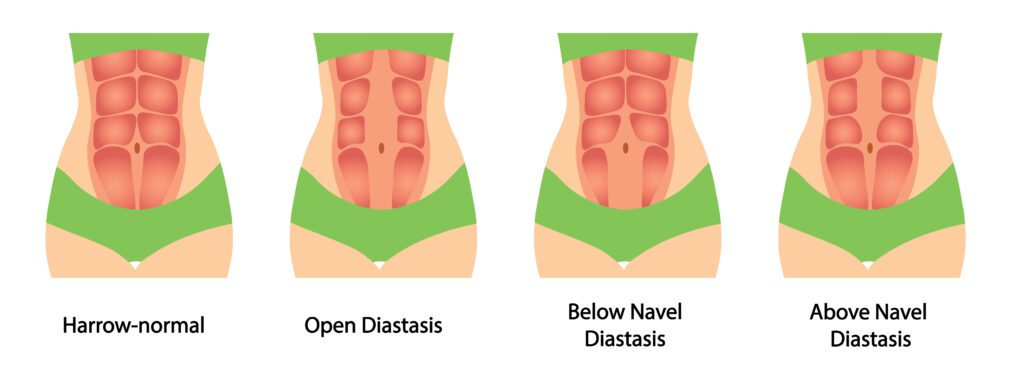
How does a C-section Impact Running?
Mothers who undergo C-sections may take longer to recover and return to running due to the major abdominal surgery involved. If you have had a C-section, it is essential to exercise patience and grace with yourself to prevent injury and allow your core muscles to heal properly. Expect to take longer to recover compared to those who had a vaginal birth, and make sure to focus on healing your core before resuming running.
The C-section scar can impact the surrounding muscles and organs, including the digestive, urinary, and reproductive systems. Scar mobilization is a technique that can help increase tissue mobility, reduce inflammation, and promote healing. This technique can also be used for perineal scars. Mamastefit has a free article and guide to help you learn how to practice scar mobilization.
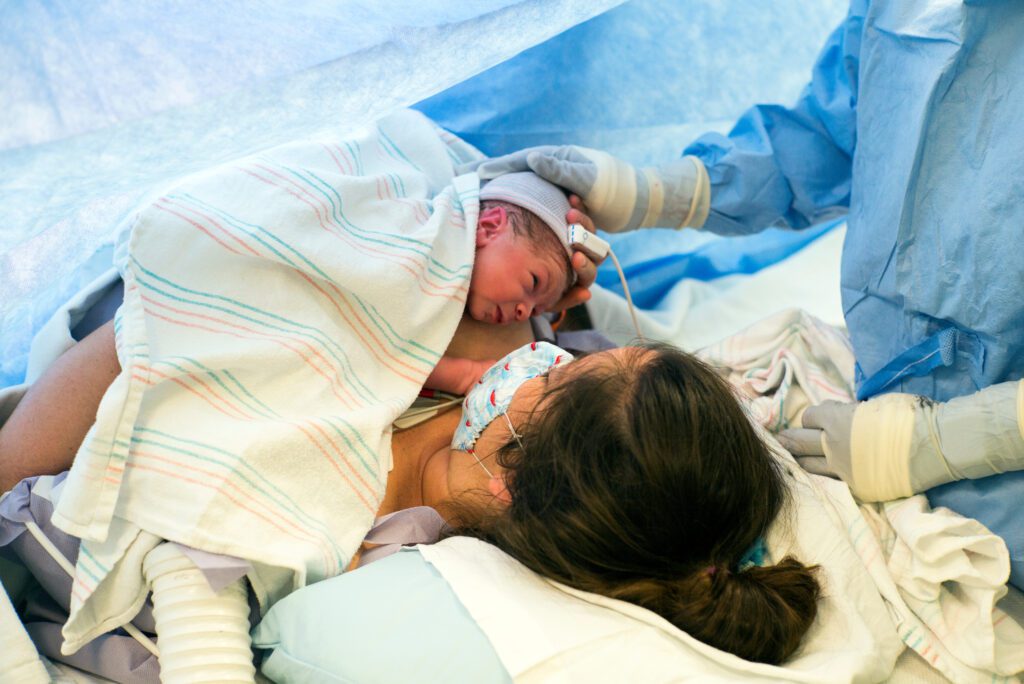
A Gradual Approach
For the eager mother runner, hearing that she must wait three to six months to run again can be devastating. She may be under the impression that there is nothing she can do during this waiting period, and she may also worry about the impact on her mental and physical health, imagining herself lying on the couch for six months.
In reality, there is a lot of work that needs to be done before resuming running. It’s important to follow the proper steps in the correct order. Skipping these steps can lead to injuries, frustration, and prevent you from achieving your goals. By patiently following the correct progression, you can avoid feeling bored or left out and instead set achievable goals for yourself. This will help you track your progress and stay motivated.
Skills Needed for Running
When we think about running, we often take for granted all the necessary skills and movements required for a proper run. However, pregnancy and childbirth can significantly impact functions in our body that we take for granted, like breathing and stabilization, which must be corrected before the body can handle high-impact exercise.
Therefore, a postpartum runner needs to focus on rebuilding these specific skills and movements before she can hit the road running again:
- core and pelvic floor coordination
- core and pelvic floor strength
- finding neutral posture
- lower body strength
- single-leg stability and balance
Progression to Running Postpartum
Recore Fitness has recently compiled a research-based progression that moms should follow before starting to run after giving birth. The progression involves several steps that need to be taken before running even begins. Below, I will provide a breakdown of these steps along with any other necessary considerations in an easy-to-follow manner.
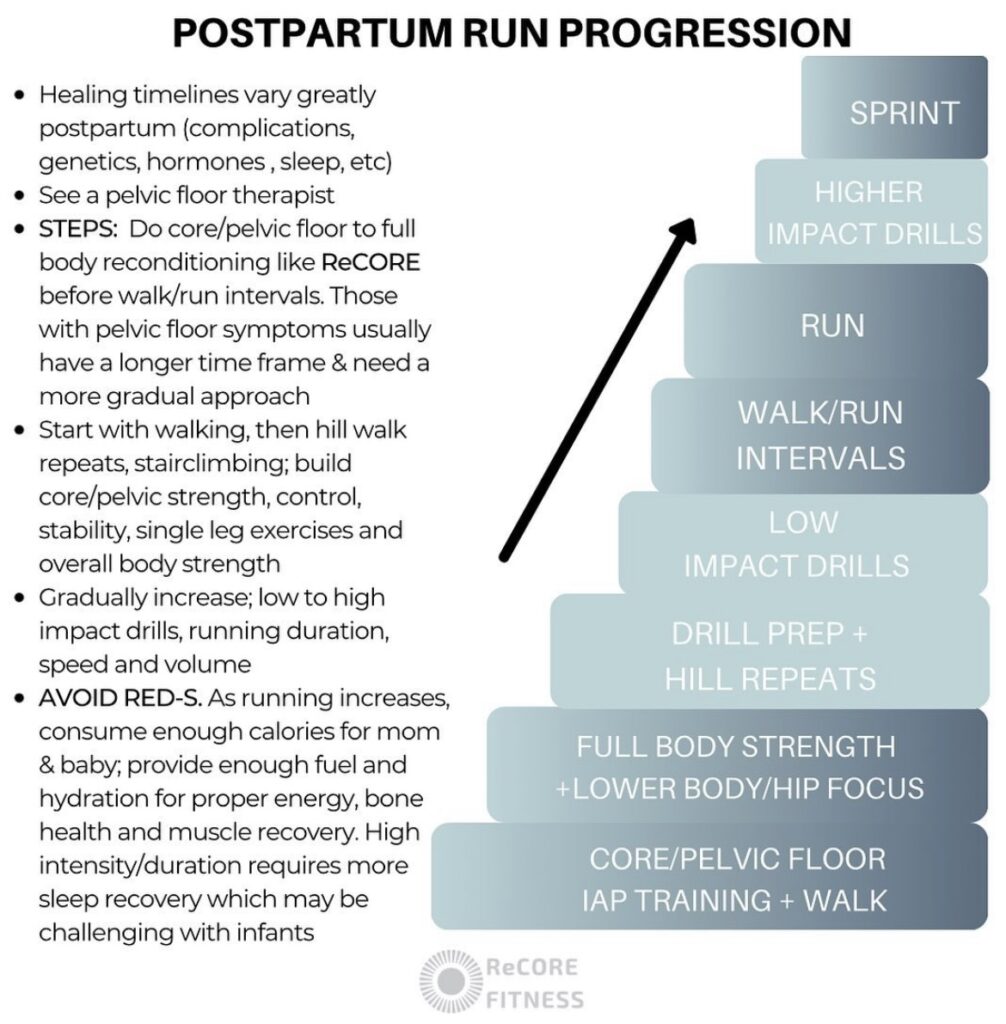
Phase 1: Build Your Foundation – 0-3 Months Postpartum
Start with Mobility
Mobility is one of the first things to focus on in the early postpartum period. Sitting, holding, and feeding a baby all day can quickly lead to stiffness and pain. While rest is crucial after having a baby, it is best to begin gentle movements that feel good as soon as possible to increase blood flow and promote healing. It is recommended to start stretches in a lying position, then progress to sitting (which can be done on a birth ball for comfort on the perineum), then move on to all fours and standing. Only do what feels good in your body and stop movements that cause pain or pressure.
Some of my preferred early postpartum mobility exercises are:
Mamastefit has a wonderful, FREE early postpartum course with videos of stretches for the early postpartum weeks.
Coordinate and Strengthen Your Core and Pelvic Floor
After giving birth, it is crucial to coordinate your core and pelvic floor as a system and strengthen these muscles. I cannot stress the importance of this step enough. During pregnancy and birth, your entire abdomen and pelvic floor undergo stretching and weakening, whether you gave birth vaginally or by C-section.
These muscles are important for stability, breathing, and supporting your inner organs during daily activities and exercise. Many women are surprised to learn that retraining your core and pelvic floor to work together is not something that happens naturally. It is a simple yet vital step in getting back to running after giving birth.
Some exercises to start with are:
- diaphragmatic breathing with relaxation
- diaphragmatic breathing with core and pelvic floor activation
- laying on your back with knees up and squeezing your core to find a flat back
- pilates 100’s with feet resting on ground or met and knees bent
- lying knee-to-chest marches
- kegel quick squeezes
- kegel holds for ten seconds at a time
I strongly suggest following an evidence-based pelvic floor and core plan before attempting to run. A good plan will include diaphragmatic breathing and progress safely and slowly. They also can begin very early postpartum. If you are worried about diastasis recti, following a plan like this is a great starting point. I recommend the following plans that can be started in the very early postpartum period:
- Recore Fitness – two, six-week programs are available and can be started very shortly after giving birth. These programs focus on rebuilding the core and pelvic floor’s coordination, strength, and stiffness to prepare for running, lifting, or jumping.
- The Bump Runner – a twelve-week program that can be started shortly after giving birth is available. It focuses on core and pelvic floor rehab as well as introducing strength and balance movements necessary for running.
Go on Walks
Walking is the next exercise to begin early postpartum after incorporating gentle pelvic floor and core reconnection. As stated above, research shows that waiting until the six-week appointment to begin walking is too long. Women need to begin walking as soon as they feel comfortable starting with five minutes and gradually increasing up to thirty-minute walks several times a week. Walking gently introduces demand on the pelvic floor, increases strength, increases cardiac fitness, releases endorphins in the brain, and so much more. Read more in my postpartum walking guide.

Introduce Strength Training and Balance
After beginning to rebuild your core and go on walks, full body strength training can begin. It is important to focus on lower body and hip strength as much as possible. The hips, glutes, and inner thighs were also weakened during pregnancy, and they are incredibly important for stability when running. Many postpartum workout plans have fun and tempting goals, like being able to complete a pull-up. I want to encourage you to stay focused on working towards running if thats is your goal, and not get distracted by other fun fitness goals. Those can come later. If you want to run, it is essential to focus on the core and lower body at first.
Some exercises to start as early as two to four weeks postpartum are:
Again, I cannot recommend enough just following a progressive plan plan like the Recore Fitness programs or the Bump Runner Birth to 12 Weeks Program. These plans include exercises beyond just Kegels to help you prepare for the demand running will put on your body.
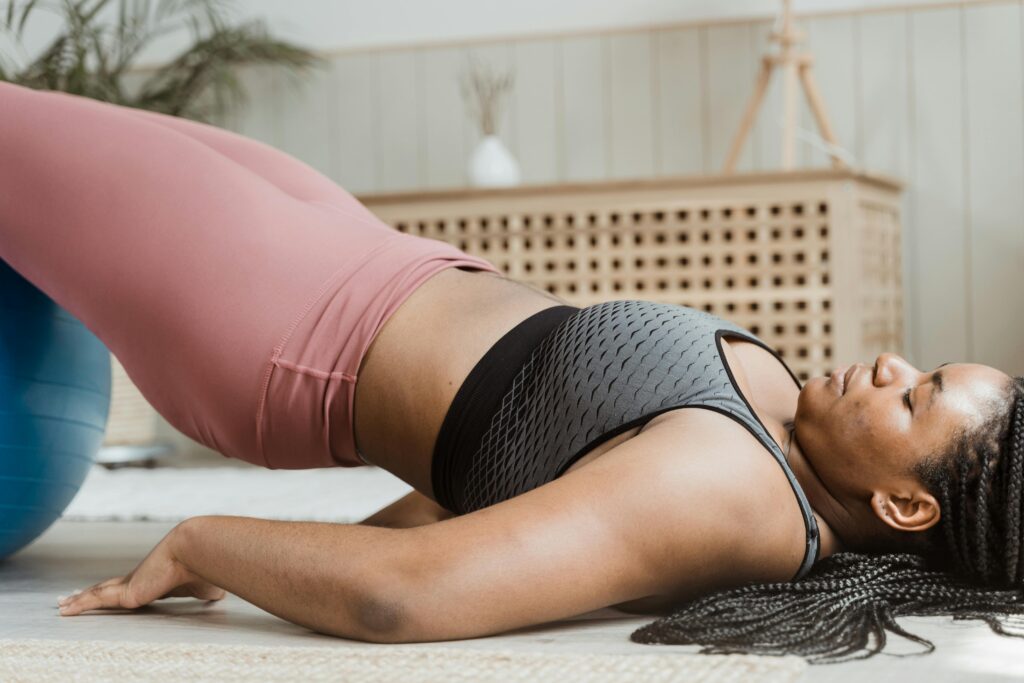
Check for Signs and Symptoms of Pelvic Floor Dysfunction
As you head into your six-week postpartum check-up, it is important to let you doctor know if you are having any issues. Check for any of the following symptoms of pelvic floor dysfunction and tell your doctor if you’ve been experiencing them:
- urinary and/or fecal incontinence
- noticeable diastasis recti (ab separation)
- abdominal pain
- pelvic pain
- feelings of heaviness in the pelvic floor
- feelings of tension or excessive clenching in the pelvic floor
- low back pain
A few more signs to look for if you are more than six weeks postpartum are:
- pain with intercourse
- blood loss that is not linked to the menstrual cycle beyond 8 weeks postpartum
If you have any of the above symptoms that are not improving with a few weeks of following an evidence-based rehab program, it is important to find a pelvic floor physical therapist in your area. They will be able to address your specific problems and have you healing and stronger in no time. Many insurance companies are beginning to cover this excellent service.

Introduce Hill Repeats and Low Impact Drills
As you gain strength and want to increase your cardio fitness before you are able to handle high impact, you can begin challenging yourself with walking hill repeats. A few times a week when you are on a walk, find a hill to go up, and then walk after. You will feel the cardio and strength challenge that it adds.
Two example workouts created by Recore Fitness are:
- 1–2 minute brisk uphill walk, 2 minute flat walk- repeat 6 times
- 8 minute slow uphill walk, 2 minute flat walk- repeat 3 times
You can also start low impact drills near the twelve week mark; however, it’s okay if you don’t feel ready for these quite yet. LIsten to your body and start to sprinkle one or two drills into your strength days as you feel comfortable. Increase the number of drills you try as your body can handle it. Some drills to try include:
- speed walking up stairs
- inclined mountain climbers
- tiny steps jogging in place
- squat mini jump (squat and almost jump but stop at your tippy toes)
- tiny lateral hops over a line
- ladder agility drills
Here is a reel from Recore with some examples of breaking down drills and making them easier.
The point is to start to increase the demand on the pelvic floor very gradually. Keep everything low to the ground, and only do about ten reps at a time at first. Be patient with yourself as you introduce high-impact movements. Never push through discomfort or pain because you might end up injuring yourself or causing further damage.

Phase 2- Start Gradual – 3-6 Months Postpartum
Pass the Return to Run Test
Once you are at least twelve weeks postpartum, have begun pelvic floor and core rehab, it is time to try the return to run test. This test was published in the 2019 Postnatal Return to Run Guidelines and is evidence-based.
The test consists of:
- Walking for 30 minutes
- Single leg balance for 10 seconds on each leg
- Single leg hopping for 10 reps on each leg
- Single leg squat for 10 reps on each leg
- Jogging on the spot for 60 seconds
- Forward bounding for 10 reps on each leg
- Running man for 10 reps on each leg
Here is a video of how to perform each exercise in the test:
As you do the test, check for:
- pain
- incontincence
- feelings of bulging or heaviness
- a lot of wobbling or falling over
- failure to complete the full range of motion due to weakness
If you don’t pass, that’s OKAY! You WILL get back to running eventually. If you notice very mild incontinence, balance, or strength issues, but are already starting core and pelvic floor rehab, I recommend sticking with your plan and giving yourself a little more time. If you experience severe symptoms or feel that you need extra guidance, it’s probably time to get an appointment with a pelvic floor physical therapist.
While some women will be ready to run at three months, others won’t be ready to run until six months or more. It depends on each women’s labor and delivery, level of fitness before and during pregnancy, and honestly some unknown factors.
Get Quality Running Shoes
Before you can hit the road, it is essential to get a quality pair of running shoes. Do NOT run in gym shoes or the random pair of tennis shoes you find on sale. Running in improper shoes will most likely lead to injury.
If you have old shoes you ran in before giving birth, check the bottom to ensure the treads are not too worn down. Most of us hit the ground unevenly when we run, and if we run in worn-down shoes, we risk getting an injury from improper overuse. Also check the fit. Especially if this was your first pregnancy, your feet may have grown, causing you to need a bigger size.
A lot goes into picking a running shoe, like whether or not your feet roll inward or outward. Your gait also likely changed during pregnancy, and it may never return to how it used to be. Make sure you head to a store where someone knowledgeable about running shoes can help you find a custom fit, such as Fleet Feet or your local running store.

Consider Your Child
Once you become a mom, you must consider where your child will be while you run. Here are some of the best ways to get your run in as a mom:
- With a jogging stroller– This is my top preferred method of running as a stay-at-home mom. I don’t have to wait for anyone else to be available to watch my children so I can go on a run. I can go almost anywhere as long as the path is stroller-friendly, and my kids often get a good nap while running. Score!
- At a gym with childcare– Another great option is to find a gym with childcare and run on the treadmill or track. Having a consistent place where you can run, rain or shine, and be under the same roof as your child is very nice. Many gyms will only watch your child once they are at least six months of age, so check the age requirements before buying a membership.
- When someone else is available to look after your children.-You may not have the budget or desire for a gym membership or a jogging stroller. A possible free option is to ask a friend or family member if they can watch your child while you go for a run. Even if you can only arrange for childcare once a week, it’s better than no running at all.
- At an enclosed track – An outdoor track with a fence is a fantastic place to get in your run, especially if your child is walking. You can set up a blanket with toys in the middle of the track or bring bikes, scooters, toy cars, etc., for your child to play with while you run. We live near an enclosed track with a large playground in the middle for kids to play on while we run. It is amazing!
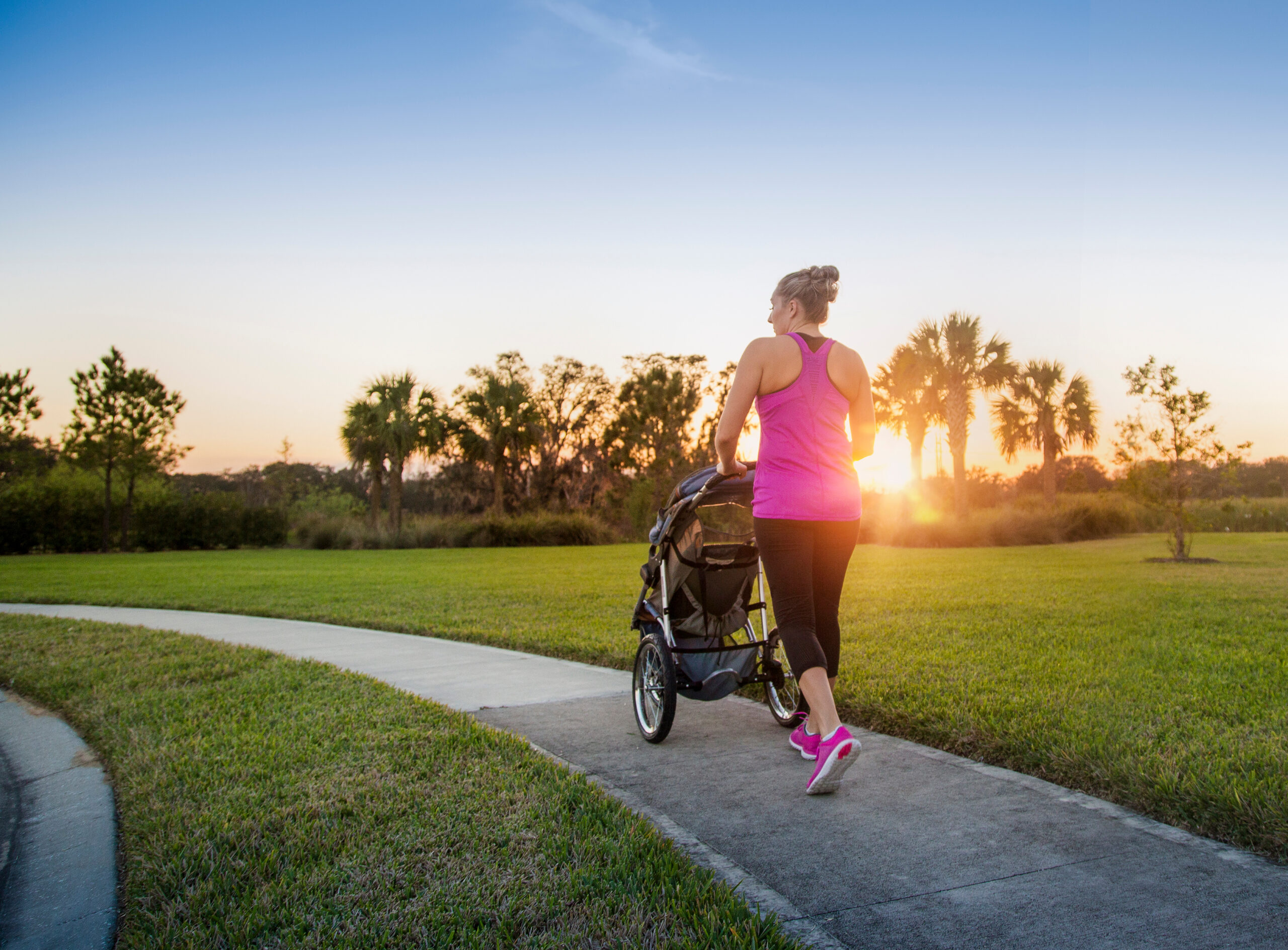
Start with Walk/Run Intervals
Now that your body is ready, you have good running shoes, and your child is taken care of, it’s time to get running! Stop and celebrate this. This is a big deal!
Creating or finding a plan for interval running will help you avoid jumping into things too fast and causing injury. It’s important to gradually increase the demand on the pelvic floor muscles, let them adapt and strengthen, and then slowly increase some more.
It’s important to always increase the volume of running (distance/time) before the intensity (speed). Work your way to being able to run for 30-60 minutes or a 5k-10k BEFORE ever working on running faster. To get a good workout in, the walks should be fast and the runs should be slow/easy (conversational pace). If you walk slow and run fast, you are not doing an interval workout, which is too much impact at first.
Here are some running plans to follow to get you started:
- Bump Runner’s Postpartum Runner Course- While this course is the most expensive plan on this list, it’s also the highest quality because it is tailored to the postpartum runner. It walks you through twelve weeks of walk/run intervals AND it includes strength workouts that continue to build upon pelvic floor and core restrengthening as well as hip and full body exercises needed for running. It really has everything you need.
- Run intervals on your own–
- Start with one minute of jogging and three minutes of walking every time you run until you’ve run for twenty minutes.
- The next week, do one minute of jogging and two minutes of walking.
- The next week, do one minute of jogging and one minute of walking.
- The next week, do two minutes of jogging and one minute of walking.
- The next week, do three minutes of jogging and one minute of walking.
- Keep increasing the amount you jog before you walk until you’re no longer walking during your run.
- C25K App– if you’re anything like me, you don’t want to have to think up what you’re going to do for your run each day. The C25K (couch to 5K) app offers a fantastic free training plan. This app starts very slow with walking and running intervals and leads to you being able to run a continuous 5K by the end of eight weeks. The voice coach tells you when to walk and run, so you never have to look at your phone while you run. I followed this running plan after I had my first child, and I loved it.
- Other Beginners Training Plans– If you are a seasoned athlete, you may feel insulted by following any running plans for beginners. However, running postpartum is like starting over with a new body. I recommend following any quality beginner running plan like this 8-Week Beginner’s Walk-to-Run Program or other plans at the Runner’s World shop.
Always warm up with a five-minute walk and some quick dynamic stretches. Remember to also cool down with a walk and some static stretches. A few minutes spent caring for your muscles will prevent numerous injuries in the long run. Limit runs to three days a week at first, preferably every other day, with rest and strength workouts in between.

Track Your Progress
While tracking your progress is not mandatory, it motivates and encourages you to keep going. Even if you improve more slowly than you’d like, seeing how much progress you make in the beginning will be rewarding.
Here are my favorite ways to track your progress:
- Strava– Strava is a free app that tracks your distance and speed while you run using your phone’s GPS signal. You do not need to buy a smartwatch to use it, making it a great, no-cost option.
- Smartwatch- My favorite method of tracking progress is using a smartwatch because it can track more things than your iPhone can. Fitbit is my favorite brand of fitness trackers. Most models are cheaper than Apple Watches. I have an older version of the Fitbit Versa, and I love it. You can also use the app to track weight, calories, sleep (important for a new mom), and more. Garmin watches are more expensive, but are increasing in popularity and are very liked by many.
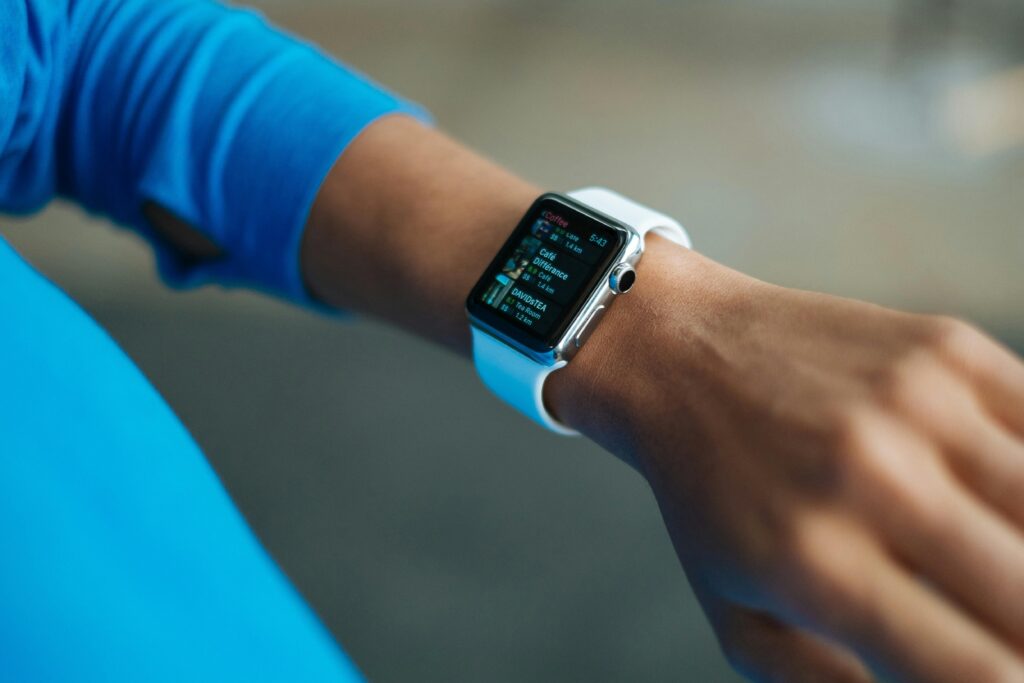
Continue to Strength Train
Once you start to run postpartum, don’t neglect strength training. If you’re reading this, running is probably your preferred exercise method. Trust me, I get it. I love to run, too. Research shows that even small amounts of strength training alongside running prevents injury and increases endurance and speed on runs.
Follow whatever training plan you like. Below are some recommended programs I recommend to maintain strength while running:
- Bump Runners’s Postpartum Runner Program– As stated above, not only does this course have twelve weeks of run/walk intervals, but it also has twelve weeks of strength workouts focused on the pelvic floor, core, and muscles needed for running.
- Mamale App– This subscription-based app is designed just for moms, and it also has a quality program for rebuilding strength after birth. It has workouts ranging from progressive overload to yoga. It also includes nutrition with features like recipes and grocery lists.
- Mamastefit After Postpartum Strength Training Program – this subscription program is for those with access to a gym or a home gym setup. It goes through cycles of focusing on strength endurance, max strength, and strength/power.
- Sweat App – This subscription-based app has over fifty training plans you can choose from, ranging from barre to power-lifting to HIIT and more. Plans for home or gym use are available.
- Tone it Up App – this app is also a subscription geared towards women at home or on the go. Minimal equipment is required, and workouts are delivered in video format. I recommend this for the mom who needs extra fun to be motivated to exercise.
- Pregnancy and Postpartum TV -this free YouTube channel is also geared towards moms working out at home. It includes fun workout videos ranging from yoga to HIIT to Pilates.
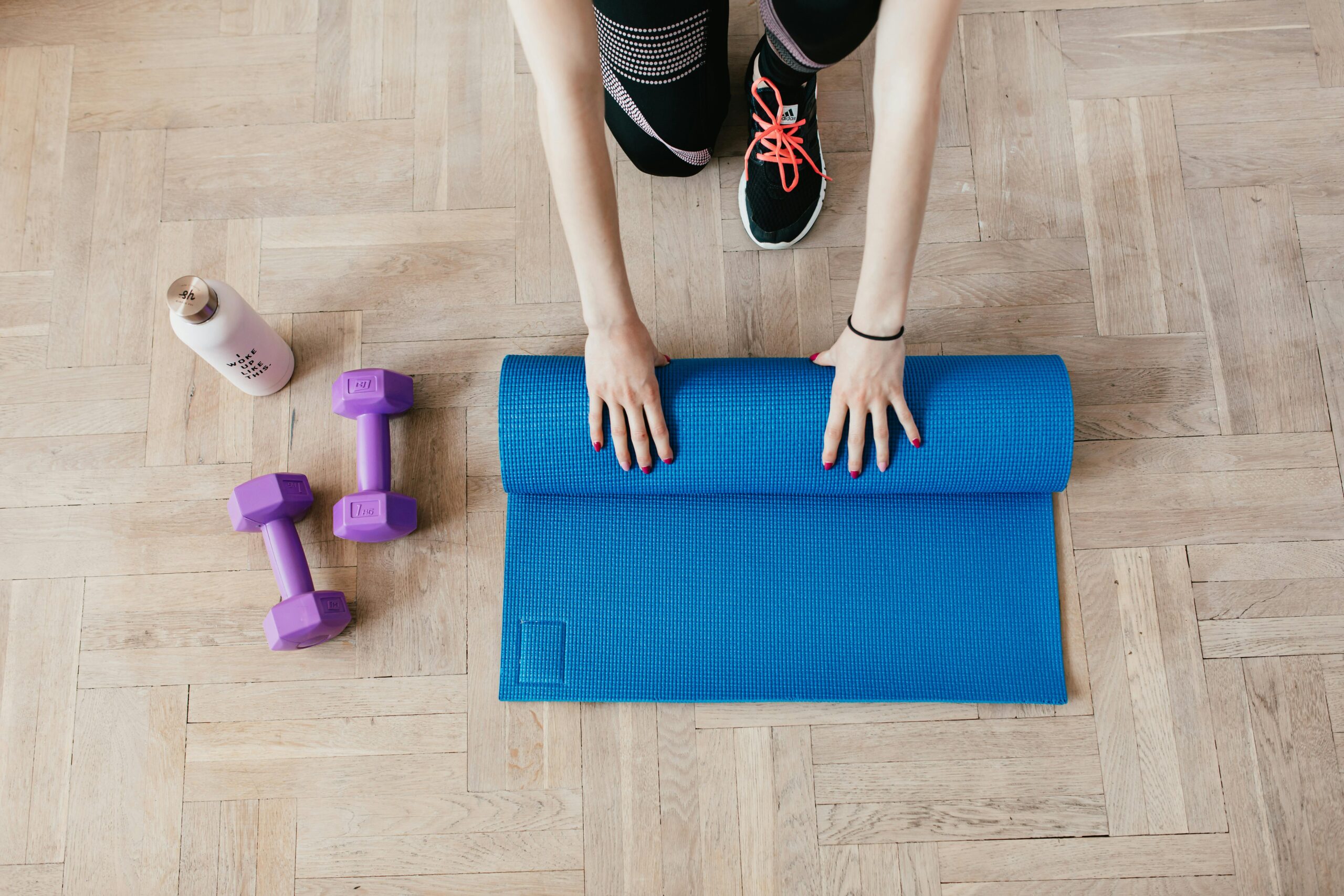
Phase 3- Train, Race, Repeat – 6+ Months Postpartum
Work on Speed
As stated above, it’s important to increase how much and how far you can run before worrying about speed. Once you’ve built a base and can run for thirty to sixty minutes, or for a 5K to a 10K, you can begin to focus on speed. Drills and sprints are great for increasing speed, and they are also the highest forms of impact you can introduce to the pelvic floor. Below is a video by Recore Fitness of drills from lowest impact to highest impact on the pelvic floor:
Find a Community
Running is mainly thought of as a solitary sport. However, research shows that having a community of like-minded people encourages and motivates us when things are tough. I have found an online community of exercising moms to be highly motivating. I love seeing how others are doing and bouncing questions and ideas off each other. Maybe you do better when you know someone is counting on you for something. I recommend finding a running buddy in that case, whether it be a friend or your husband. Another option is to find a local running club or running group. How ever you prefer, find a community of runners to encourage you along your journey.
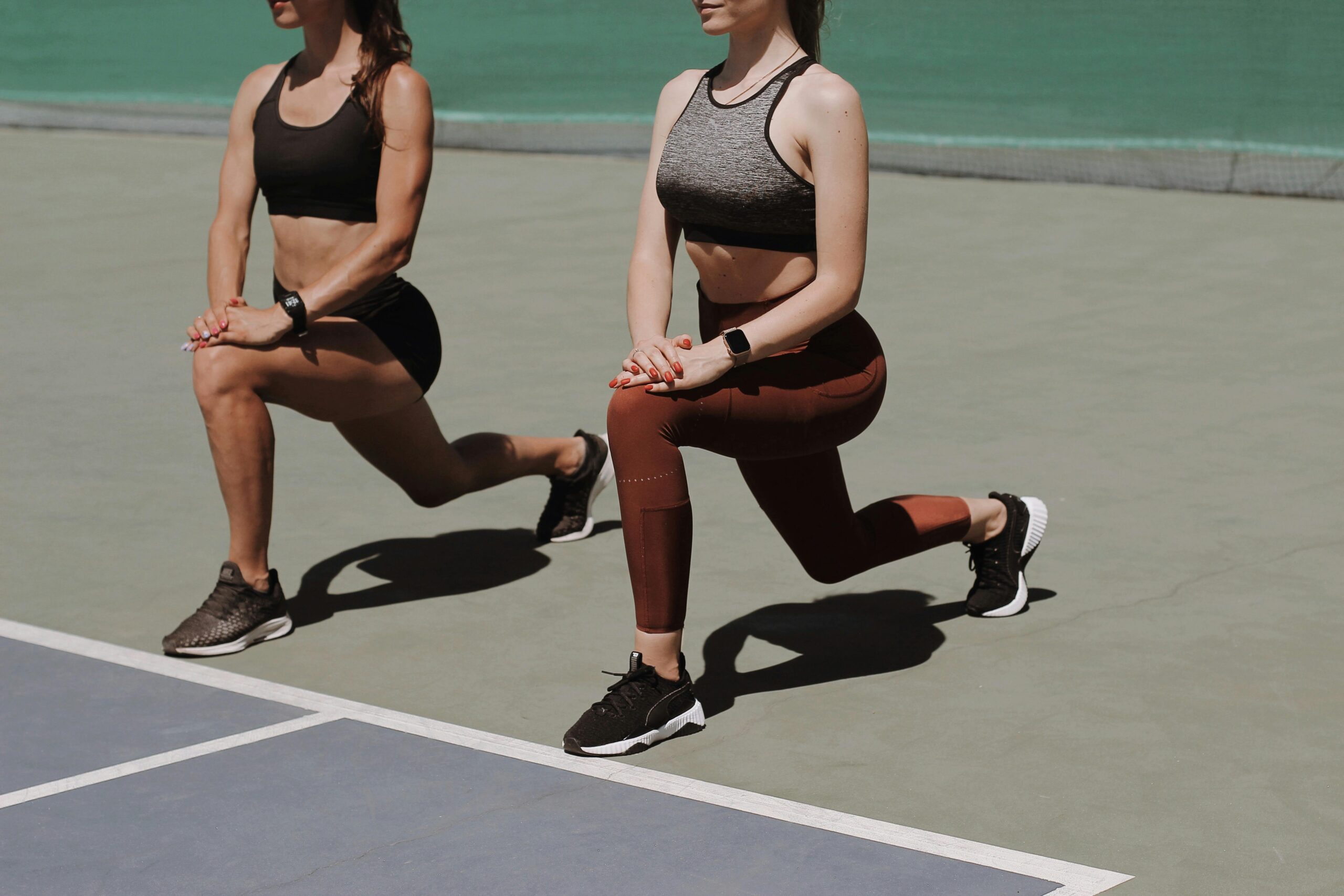
Be Gracious With Yourself
You must provide yourself with a lot of extra grace when starting to run postpartum. If you jog with a stroller, your time will be slower because you are pushing extra weight. If you choose to work out at home, there will inevitably be days when your child wakes up early from their nap. There will be days when your child is sick and needs extra care. I could go on and on with a list of possible interruptions and changes of plans. Life with children means there is less time to do what you want because you have to consider your little one. Don’t let that fact discourage you; let it inspire you.

Remember You are Making an Impact
Running when you have free time can improve your mental health by releasing endorphins and clearing your mind, making you a better mom. Moreover, the strength and endurance you gain from running will improve your physical health, giving you more energy to play with your child now and increasing your lifespan to be there for your child later in life. Most importantly, you set a great example for your child by modeling a healthy lifestyle. By doing so, you are passing down a legacy of exercise and wellness, which is a great feeling to stop and consider!

Don’t Neglect to Care for Yourself
Because you have a little one who needs you now, you may fall into the trap of letting your basic needs fall by the wayside. You may put so much pressure on yourself to run that you forget to prioritize other aspects of healthy living necessary to be a good mom.
Two questions to ask yourself before going on a run or working out are:
- Did I get at least six hours of sleep last night? If the answer is no, take a nap instead. Running or working out on too little sleep will wear your body down and not build it up, especially if you do it continually. Let your body heal and recover before runs. I know it’s hard to get enough sleep as a mom, but it is crucial for your physical and mental health. Make it a priority.
- Have I eaten enough healthy meals in the last twenty-four hours? If not, eat a balanced snack with protein and carbs for energy before you run or work out, like an apple with peanut butter or cottage cheese and blueberries. It can sometimes be hard to remember to feed ourselves when our children need to be fed so often. Still, it is necessary to eat healthy so you can continue to work out and not run out of energy.

Bonus Tip: Set a Goal
Starting to run postpartum is enough of a goal; however, if you thrive off having something to look forward to, I recommend setting a goal and writing it down. You could sign up for a 5K three to six months away and put it on your calendar. You may want to train for something longer, like a 10k or half-marathon. Maybe your goal is to run a mile in your neighborhood without walking. Whatever your goal is, set it, work towards it, and celebrate all the tiny wins along the way. You will stay motivated and have fun doing so.

Conclusion
After purchasing my new running shoes, Fitbit, and jogging stroller, I hit the trails with my toddler. I rediscovered my love for running and couldn’t believe I’d ever stopped. After a few injuries, a cross-country move, and another pregnancy, I had many setbacks and unexpected changes in my postpartum running journey. Despite this, I learned from my mistakes and gained valuable knowledge that I shared in this article. Currently, I am working on gradually gaining the strength and stability I need to take my two little ones on a run in our new double jogging stroller, this time with a stronger pelvic floor and a better foundation. Will you join me?
Have you hit any roadblocks in your postpartum running journey? Have you found any tips or tricks that have helped you succeed? Comment below to help another mom!

References
- Return to Running Postnatal Guidelines. In 2019, Groome, Donnelly, and Brockwell, a team of physiotherapists in the UK, created these guidelines to help postpartum runners safely return to running. They compiled what little research exists on postpartum runners into a PDF to help educate medical, health, and fitness professionals and moms alike, understanding there is a significant gap in the research for this population.
- Go Ahead, Stop and Pee. This book was written by Doctor Katie Mihevc Edwards and Doctor Blair Green, two physical therapists and mother runners who are also on a mission to help women return to running as quickly and safely as possible. This book offers evidence-based information on running during pregnancy and postpartum, including exercises and running plans to help moms hit the road with a strong foundation.
- Recore Fitness. Recore Fitness is a wonderful resource, offering specialized programs for rebuilding core and pelvic floor strength after birth and even in pregnancy. They also published a study on which drills have the lowest and highest vertical force impact on the pelvic floor and put them in order.
- Lastly, the information listed above is based on my own experience with pelvic floor therapy, running before having children, and very different return to running experiences after having each of my two children.
